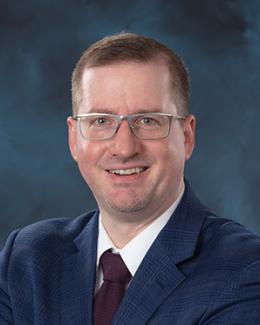Heath Huckabay has always been interested in solving problems in reverse, a desire that led him to his latest challenge – building a capability to detect rogue nuclear emissions from anywhere in the world to understand where they came from.
Heath Huckabay has always been interested in solving problems in reverse. Even his decision on what science to study in college, forensic chemistry, was driven by the desire to solve inverse problems; start with an outcome and work backward to discover what caused the problem. This desire to investigate scientific processes led him to his latest challenge – building a capability to detect rogue nuclear emissions from anywhere in the world to understand where they came from.
“Nuclear technology is very powerful and has a diversity of uses,” said Huckabay, a researcher in the Nuclear Nonproliferation Division at Oak Ridge National Laboratory. “Products from the fuel cycle can be used to create consumer products like smoke detectors, develop powerful medicines for cancer, sterilize medical products, produce electricity for millions of homes.”
But, he notes, civilian nuclear programs can be leveraged for dangerous activities.
“There’s a variety of scenarios where rogue actors could take advantage of the nuclear fuel cycle in ways that threaten international safety,” Huckabay said.
To better understand those scenarios, ORNL is working to develop a national security–focused collection and analysis capability. Though a simple concept in name, both collection and analysis are complex, multidisciplinary fields that will advance the role of nuclear emissions in international security.
As nuclear material production processes and technologies have advanced, so have methods for taking advantage of the civilian fuel cycle for nefarious purposes. Understanding this evolution of the nuclear fuel cycle is a vital part of ORNL’s National Security Sciences Directorate’s mission to keep people safe.
“It’s a major challenge to capture and decipher these complex indicators,” Huckabay admitted, “but that’s where ORNL comes in, and we get better at it every day.”
Huckabay’s background in forensics is leading the charge to use science to help protect the world from having a bad day. All types of backgrounds are needed, including electrical engineers, data scientists, physicists, and cybersecurity professionals.
“Through pulling the right researchers already at ORNL and targeted hiring, we were able to acquire the personnel we needed to establish the group, but we do have ambitions to become something greater,” said Huckabay. “We have a small but passionate community, and the work we do has an immense impact on global security.”
True to form, Huckabay’s latest endeavor is starting with an outcome—keep people safe—and working backwards to make that happen.
UT-Battelle manages ORNL for Department of Energy’s Office of Science, the single largest supporter of basic research in the physical sciences in the United States. The Office of Science is working to address some of the most pressing challenges of our time. For more information, please visit energy.gov/science.



